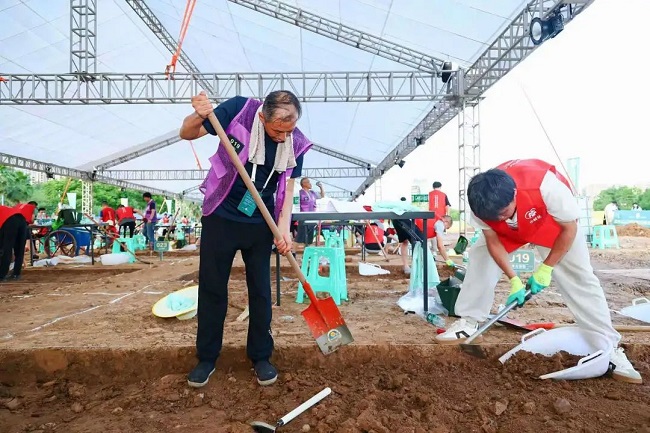

Liu Chengyu, wearing a purple vest, participates in the second National Cultural Relics Industry Vocational Skills Competition in Luzhou on July 6. [Photo/Wuxi Daily]
Liu Chengyu, a technician specializing in archaeological exploration and excavation from Wuxi, Jiangsu province, secured second place at the second National Cultural Relics Industry Vocational Skills Competition held in Luzhou, Sichuan province, on July 6.
This competition features six categories: metal artifact restoration technician, ceramic artifact restoration technician, paper and painting artifact restoration technician, wood artifact restoration technician, mud and tile artifact restoration technician, and archaeological excavation technician.
Born in 1975, Liu began working in archaeology in 1992 and has accumulated 33 years of field experience up to this year.
The award-winning archaeologist has taken part in excavations at major sites including the Mausoleum of Emperor Qin Shi Huang, the first Qin Dynasty emperor (221-206 BC), Caoxiashan Ruins, and Shaanxi Great Wall Ruins. Currently, he is a vital member of excavation teams at Wuxi sites like Helyu Relics, Doushan, Tiandun, and Dinggeng ruins.
"Wuxi is one of the main origins of Wu and Jiangnan cultures and boasts many historical relics. Our regional civilization exploration projects have enhanced my professional skills in daily work," he said.
Compared to other roles in the cultural relics sector, archaeological exploration and excavation demand the widest range of skills. Individuals must possess strong technical expertise and also oversee workers involved in the excavation process. They need to adapt to challenging outdoor weather conditions and understand the notable variations in soil and strata across different regions and land plots.
 Copyright © China Daily. All rights reserved.
Copyright © China Daily. All rights reserved.